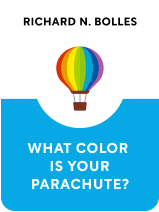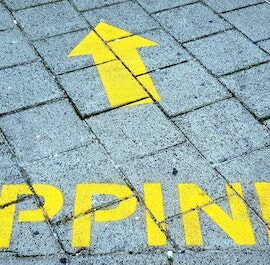

This article is an excerpt from the Shortform book guide to "What Color Is Your Parachute?" by Richard N. Bolles. Shortform has the world's best summaries and analyses of books you should be reading.
Like this article? Sign up for a free trial here .
Do you know how to figure out what you want to do? What are some methods for finding the career you want?
What Color Is Your Parachute? is a practical guide to searching for a job. If you want to know how to figure out what you want to do, you can consider one of the three methods highlighted in the Parachute book.
Read more about the three methods for how to figure out what you want to do.
How to Figure Out What You Want to Do
The first step in finding a job is determining how to figure out what you want to do. This applies regardless of whether you’re a high school graduate trying to decide what to study in college or someone who’s been working in the same field for years.
When you’re upheaving your career, try to keep other things in your life, such as your faith, values, or character, constant. Changing everything all at once is hard.
There are a few methods for researching new career directions. Method #3 is most important, but you can use all of them if you’d like:
Method #1: Online
This is the first method for how to figure out what you want to do. To learn more about what jobs and occupations exist, look at online job information sites such as O*Net OnLine. These sites group careers or jobs by categories, and once you’ve found a category you’re interested in, you can delve deeper. Keep in mind that O*Net only covers about 900 job titles, but far more exist.
Method #2: Assessments and Tests
This is the second method for how to figure out what you want to do. Career assessments can give you some information about what you might be interested in. In some cases, they may even point you towards an exact career. It’s important to keep in mind the following though:
- Tests can categorize you into a group but can’t fully represent your individuality.
- For example, you might get the “scientist” result on the Myers-Briggs test, but that only means that you and everyone else in the scientist group answered the questions the same way. It doesn’t mean that everyone in the group is exactly the same.
- Tests give you ideas rather than concrete suggestions. Keep in mind that test results require interpretation, ideally by a career counselor or psychologist.
- Tests work for some people and not others.
- Tests won’t be effective if you game the system. The point of a test is to give you new ideas, so don’t give inaccurate answers that you hope will lead to a specific result.
- Tests can only represent a particular moment in time. Tests don’t take into account what you want to learn or how you could transfer skills you already have into new fields.
- You can find many different tests online, but some particular ones to consider are the University of Missouri’s Career Interests Game, the Myers-Briggs test, or the Values-in-Action assessment.
- Some tests are inaccurate, so take more than one.
- Tests narrow down options, but at this stage, what you actually want is to broaden your knowledge base. When you’re looking to change careers, you first want to know everything that’s available before narrowing the options down to something you’d like.
Method #3: The Flower Exercise
This is the third method for how to figure out what you want to do. The flower exercise involves looking at yourself from seven different angles: compatibility with people, workplace conditions, skills, purpose, knowledges, money, and location. In the exercise, each angle will be visually represented by a flower petal. When you’ve finished the exercise, you’ll end up with a one-page diagram of your flower that contains a visual summary of your personality as it relates to your career:
(Brain researchers have discovered that when you’re trying to make life decisions, it’s effective to write down what you know about yourself on a single piece of paper.)
As you work through the flower exercise, separate your identity from your job title. Don’t think of yourself as a mechanic or a writer, think of yourself as a unique person who has skills, experience, and knowledges.
Chapter 2 will cover the detailed steps to filling out the flower diagram, and in subsequent chapters, you’ll use the information in the flower diagram for your job search.
Prioritizing
Throughout the flower exercise, you’ll be making notes on scrap paper that will allow you to fill in each petal on your final flower diagram. Many of the exercises involve making lists of items that you’ll need to prioritize. Prioritizing is important because when you’re looking for a job, you probably won’t find a position that encompasses every single thing you want. Since you can’t have everything you want, it’s important to know what you value most and least.
The best way to prioritize is to compare the options two at a time, as if they were teams in a round-robin tournament. When only considering two choices, which one do you like better? Then, rank the options based on how many times they won out over another option. If you have a tie, compare the match between the two tying options and give the winner an extra point. (For example, if item #2 and item #5 both won four times, return to your list and find where you compared #2 and #5. Give the winner an extra point.) You can access an electronic “prioritizing grid” here.

———End of Preview———
Like what you just read? Read the rest of the world's best book summary and analysis of Richard N. Bolles's "What Color Is Your Parachute?" at Shortform .
Here's what you'll find in our full What Color Is Your Parachute? summary :
- How to not just find a job, but find a job you love
- Why traditional resumes don’t find you the right job
- The 7 steps to identifying your ideal career






